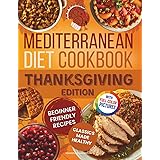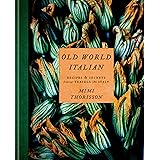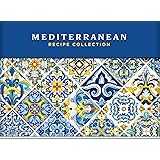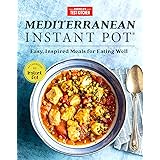While the visual feast of an individual’s “favorite salad” showcased above might appear deceptively simple, the true artistry and scientific rigor behind crafting such an exceptional culinary experience often remain unseen. It’s estimated that 85% of gastronomic satisfaction stems not merely from ingredient quality, but from the meticulous consideration of flavor dynamics, textural interplay, and nutritional synergy. This seemingly straightforward dish, when dissected through a professional lens, transforms into a complex tapestry of culinary science, demanding an expert understanding of its constituent elements.
Moving beyond the aesthetic appeal, we delve into the core principles that elevate a mere collection of ingredients into a truly unforgettable gourmet salad. This process is akin to architectural design, where each component is chosen for its structural integrity, aesthetic contribution, and functional purpose. A truly exceptional salad is not an accident; it is the deliberate culmination of informed choices, designed to engage every sense and nourish the body with precision.
The Culinary Architecture of an Exceptional Salad
The foundation of any superior salad lies in its architectural framework, comprising strategic ingredient selection that transcends basic categorization. One must think of greens not merely as a base, but as diverse platforms offering varied mouthfeels—from the peppery bite of arugula to the delicate crispness of butter lettuce. Proteins are integrated not solely for satiety, but for their ability to introduce umami richness or a contrasting chew, perhaps a pan-seared halloumi or smoked trout. Furthermore, complex carbohydrates, like roasted farro or quinoa, provide grounding earthiness and sustained energy, ensuring the dish is both balanced and substantive. This comprehensive approach ensures that every forkful contributes to a holistic and satisfying experience, much like a master painter selects each pigment for its precise role in the overall composition.
Beyond the Leaf: Strategic Ingredient Selection for Gourmet Salads
Achieving a truly gourmet salad necessitates a profound commitment to ingredient sourcing, prioritizing quality, seasonality, and provenance above all else. Consider heirloom tomatoes, harvested at peak ripeness, which offer a burst of complex sweetness and acidity far surpassing their supermarket counterparts. Artisanal cheeses, such as a crumbly goat chèvre or a robust aged Parmesan, introduce specific lactic tangs or crystalline textures that elevate the entire dish. Furthermore, the selection of premium proteins, be it responsibly sourced wild salmon or pasture-raised chicken, contributes not only to nutritional density but also to a superior flavor profile and ethical consumption. Each component is a carefully chosen note in a symphony, resonating perfectly with its counterparts to create an exceptional salad experience.
A Symphony of Sensation: Mastering Flavor and Texture Dynamics
The art of crafting an exceptional salad revolves around orchestrating a harmonious interplay of the five basic tastes—sweet, sour, salty, bitter, and umami—and an intriguing range of textures. A perfectly balanced salad might feature the slight bitterness of radicchio contrasted with the sweetness of candied pecans, cutting through the richness of a creamy dressing with a bright, acidic burst from pickled red onions. Texturally, the goal is often a dynamic juxtaposition: the crisp snap of fresh cucumber against the creamy yielding of avocado, or the tender chew of roasted vegetables alongside a crunchy seed mix. This intricate dance of opposing yet complementary sensations prevents palate fatigue, ensuring each bite offers a novel and engaging experience, much like a carefully choreographed ballet where every movement serves to enhance the overall dramatic effect.
The Art of Dressing: Emulsification and Flavor Infusion
The dressing, often underestimated, acts as the unifying agent, binding disparate elements into a cohesive culinary narrative. Mastering emulsification is paramount, ensuring a stable suspension of oil and acid that evenly coats every ingredient without leaving a greasy residue. An ideal acid-to-oil ratio, typically between 1:3 and 1:4, forms the backbone of a classic vinaigrette, providing the necessary tang to brighten other flavors. However, advanced dressing techniques involve infusion, such as steeping herbs like tarragon or rosemary in warm olive oil, or crafting a gastrique by reducing fruit juice with vinegar and a touch of sweetness. These sophisticated liquid components are not merely toppings; they are integral flavor bridges, enhancing the inherent qualities of each ingredient and delivering a truly exceptional salad.
Nutritional Intelligence: Engineering a Micronutrient Powerhouse
Beyond caloric count, the contemporary approach to salad design emphasizes nutritional intelligence, focusing on micronutrient synergy and bioavailability. An exceptional salad isn’t just “healthy”; it’s a strategically assembled powerhouse engineered for optimal absorption and cellular benefit. Consider the pairing of fat-soluble vitamins (A, D, E, K) found in dark leafy greens with healthy fats from avocado or a quality olive oil dressing, which significantly enhances their absorption. Similarly, the inclusion of Vitamin C-rich elements like bell peppers or citrus alongside iron-rich spinach can boost non-heme iron uptake, demonstrating a thoughtful understanding of biochemical interactions. This level of intentionality transforms a simple meal into a potent functional food, designed to fuel and sustain the body with maximal efficiency, akin to designing a high-performance engine where every component works in perfect concert for peak output.
Bioavailability and Synergistic Pairings in Advanced Salad Design
The concept of synergistic pairing is crucial in elevating a salad from merely nutritious to profoundly beneficial. For instance, incorporating lycopene-rich tomatoes with a source of healthy fats, such as extra virgin olive oil, enhances the bioavailability of this powerful antioxidant, contributing more effectively to cellular health. Similarly, combining cruciferous vegetables like kale or broccoli with ingredients rich in allium compounds, like garlic or onions, can amplify their detoxifying properties. This meticulous selection based on known nutritional interactions ensures that the body receives not just a collection of nutrients, but an optimized delivery system. Such advanced salad design reflects a deep appreciation for both culinary excellence and the intricate science of human physiology, ensuring every bite contributes purposefully to well-being and the creation of an exceptional salad experience.
The Craft of Assembly: Presentation and Layering Techniques
The final act in crafting an exceptional salad is its assembly, where precision in layering and artistic presentation dramatically influences both the aesthetic appeal and the gustatory experience. A well-constructed salad allows each ingredient to be appreciated individually while contributing to the overall harmony. This often involves placing denser, more robust ingredients at the base, followed by lighter greens, and then strategically scattering contrasting elements like nuts, seeds, or delicate herbs on top. Dressing should be applied judiciously, sometimes tossed with individual components before final assembly, to ensure even coating without oversaturating. This thoughtful arrangement is not merely for visual impact; it ensures textural integrity and facilitates the discovery of complex flavor combinations with every forkful, echoing the precision of a master architect carefully placing each brick to form a stable and beautiful structure.
Ultimately, the journey from a simple mix of greens to a truly exceptional salad is a testament to the power of culinary knowledge, scientific understanding, and a profound respect for ingredients. It transforms the act of eating into an exploration of flavor, texture, and nutrition, making every meal a personal masterpiece. This deep dive into the nuances of advanced salad crafting reveals that a “favorite salad” is often the result of an intricate interplay of deliberate choices, elevating a common dish into an art form worthy of gastronomic appreciation.











